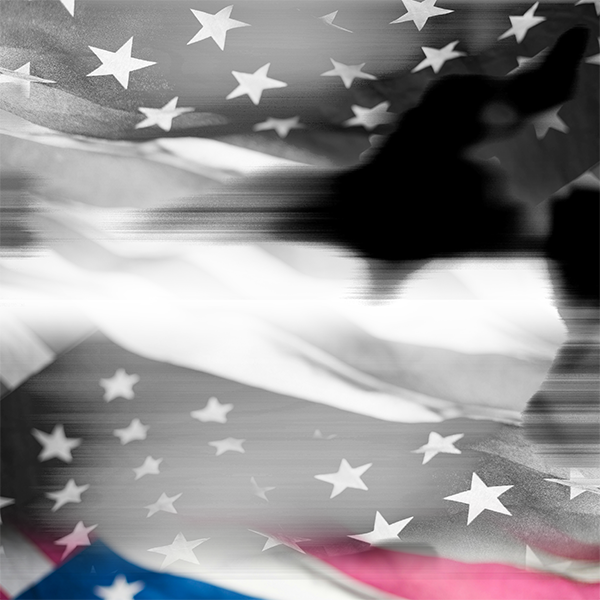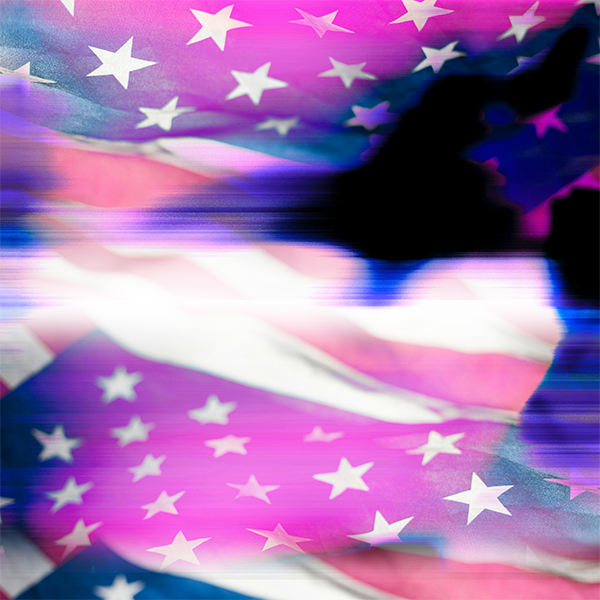Negotiating Difference (Hopeful Realism, Pt. 3)
*Editorial Note: Part 1 of Seth’s “Hopeful Realism” series, entitled “Searching for a Robust Spirituality in a Doomscrolling World can be read here. “Excessive Spirituality,” Part 2 of this series, can be found here. “Negotiating Difference” is Part 3 and continues below, serving as Seth’s conclusion this trilogy of articles. ~CK
As I seek to unwind why the spiritual framework I absorbed inside conservative evangelical spaces is proving insufficient for dealing with a world coming unraveled, questions like this one keep rising to the surface:
- How does our spirituality handle difference?
I’m using “difference” as a shorthand for the ways we, followers of Jesus, understand, respond to, and interact with people whom we perceive are unlike those inside our “own” group. However we architect our insider identity, these are people that we perceive are either far from the center of belonging or outside belonging.
In other words, they are strangers, “Others,” “far neighbors,” heretics, the world, and thems. I’m thinking of how difference might be marked by beliefs and behaviors; it could be cultural-ethnic, political, religious, socio-economic, sexual, or any other way that difference is marked in order to forge boundaries of belonging. I also have in view both how we talk about difference and how we arrange our bodies in relationship to difference.
I am only beginning to notice how central the question about difference is to our spirituality. Every spirituality deals with difference, but many only do so implicitly and often reactively. Some spiritual frameworks do not advertise their posture toward difference even though sustaining a certain kind of relationship with difference is integral to identity and belonging for that framework.
When hidden, that implicit posture toward difference can sneak up on you, like discovering after a number of years that the family you married into is actually part of the Mafia. After you’ve become an “insider,” you discover, often in painful ways, that correctly defining the boundaries of identity is tantamount to belonging. Difference poses a potential threat to group identity.
This nuance is critical: All definable spiritualities include ways of forming the boundaries of identity that create contrast. But not all spiritualities treat those differences as inherent threats or problems. For some, correctly delineating insider/outsider differences is necessary for orthodox performances of identity, even when those performances are not explicitly included in the list of ingredients on the outside of the box, as it were.
But not all. I’m searching for a spirituality that takes difference seriously and honestly, one that remains differentiated through encounter, one that nurtures a posture toward difference that is not inherently tribal, defensive, or insecure (Remember simultaneity from Part 2?).
Nurturing reciprocal relationships across difference is one of the concrete ways to unmask and disassemble the systems and structures of domination. In those unjust systems, the privileged benefit from the segregation of bodies. Share on X
Negotiating Difference is Central to our Spirituality
I’m convinced tending to the question about difference is central for working out a robust spirituality in our doomscrolling world. The robust spirituality I’m searching for, which I’m calling hopeful realism, necessarily and actively involves encounter with unlike “Others.” It’s the kind of spirituality that negotiates difference explicitly and by design.
The posture of hopeful realism treats encounter across difference not as a threat to be managed, avoided, or controlled, but as one of the material sites in which Jesus is bringing radically new1 forms of life. This is a spirituality that moves through the complexity of daily life in expectation that the tragic is being transfigured in and through places of encounter with those unlike us.
Negotiating relationships marked by difference, after all, was at the heart of how early Jesus followers worked out a robust spirituality amidst complex social, religious, ethnic, and political tensions. When we tend to the narrative in Acts and to the contextual questions from which Paul articulated theological and ethical vision, it becomes clear that confessing Jesus as Lord disrupted boundaries of identity and belonging.
Even for those who resisted it (like Peter), being included in Jesus’ body necessarily thrust together insiders and outsiders, friends and strangers, clean and unclean. More pointedly, they discovered what their new life in Jesus was about only through encounter with “unlike others.” Difference was a site of the Holy Spirit transfiguring enmity and birthing new creation.
I’m searching for a spirituality that takes difference seriously, one that remains differentiated through encounter, one that nurtures a posture toward difference that is not inherently tribal, defensive, or insecure. (1/4) Share on X
Difference and Spiritualities of Stability
In Part 2, I wrestled with my background inside a “spirituality of stability” and what to do when it stops working. One of the weaknesses of a spirituality of stability is that it doesn’t account well for how to deal with those we perceive are different from us.
Stability can be sustained by resisting difference and nurturing homogeneous social spaces. The more familiar my world, the more stable it feels. The threat of difference is about the possibility of disruption, the fear of moving from stability to instability.
Examining spirituality through the lens of difference reveals how stability is a kind of illusion because life is always a mix of the tragic and transfigured, inherently complicated and unstable. That means one of the ways stability (or the illusion of it) is maintained is by policing, resisting, and avoiding difference. Coercive power is levied unto these ends.
Serious harm and dehumanization happens not always because people are bigots, but rather because their spiritualities of stability cannot bear the threat of difference. Doomscrolling conditions likely compound this problem by causing us to play things close to the chest, to become defensive, to default to the safe and familiar. In doomscrolling conditions, encounters marked by difference can feel dangerous.
The spirituality of stability I absorbed had a category for how to handle difference: “Neighborly love.” But our understanding of neighborly love was downstream of more fundamental assumptions about how to draw the boundaries of belonging. The result was that neighborly love functionally translated into evaluation, critique, and nervous distance.
The point is that spiritualities of stability frame out the possibility that we could be changed through an encounter with those not already like us. At best, difference is a foil that reinforces existing insider identity.
There is little imagination for the possibility that encounters across difference do not need to collapse into sameness and can still generate radical newness through genuine mutuality.
Negotiating relationships marked by difference, after all, was at the heart of how early Jesus followers worked out a robust spirituality amidst complex social, religious, ethnic, and political tensions. (2/4) Share on X
Difference and Church/World Distinctions
Spiritualities of stability trade in theologies with sharp distinctions between the church and world. This theology is often hidden beneath the water line of awareness in our spiritualities but still doing a lot of work above the surface.
With sharp distinctions, there is little complexity, interdependence, or overlap between those inside and those outside belonging. It’s not just that there is a distinction between the church and the world. It’s that the world needs the church (for salvation) but the church doesn’t really need the world or even understand itself as inherently worldly.
The church can critique the world from a position of purity, unsullied in its ability to see through and accurately diagnose everything out there. But because of the sharp distinction, the church does not need to, and often cannot, receive constructive critique from those outside belonging. This leads to a lack of self-awareness, or to what sociologists call “reflexivity.” It creates a posture of constant analysis of the Other without awareness of the ways those judgements are themselves conditioned by context, history, and social position.
With sharp distinctions, the problem, the source of the doom, is always “out there” among those not like us. Even when addressing problems internal to church-life, spiritualities with sharp distinctions use “the world” as a scapegoat. We’ve been influenced by secularism, feminism, postmodernism, critical theories, all things from the outside that have poisoned the purity of our beliefs and behavior on the inside. The solution is obvious: We must exorcize out all of the outside elements, the alleged points of difference, in order to get back to orthodox stability.
The severity of this issue is deepened by the fact that many spiritualities of stability consider other self-professed Christians (even those explicitly connected to the “one, holy, catholic and apostolic Church”) as those outside belonging, not just secularists or persons from other faith traditions.
A recent well-known proposal undergirded by sharp church/world distinctions implies that taking seriously our doomscrolling conditions requires retreating into the safety of homogeneity.
Proposals like these nurture hyper vigilance about how those who are different could threaten the purity, stability, or the existence of us. A kind of non-existence – a loss of identity and meaning – is at stake if difference is not appropriately dealt with. They imply that any expression of curiosity and openness toward those who are not already like us is tantamount to betrayal, to the loss of conviction, to a lack of faithfulness (to scripture, to tradition, to whatever).
But taking difference seriously in our doom-filled world doesn’t have to look this way. There are better ways forward that preserve the distinction between us and those farther from the center of belonging while also holding generative space for the new life Jesus is bringing through encounter.
Even for those who resisted it (like Peter), being included in Jesus’ body necessarily thrust together insiders and outsiders, friends and strangers, clean and unclean. (3/4) Share on X
Encountering Difference Can Be a Gift of Jesus’ Life
As I described in Part One, a robust spirituality with the wherewithal to face a doom-filled world without despair or spiritual bypassing requires more than just thinking in better ways. It requires embodied postures, and that is precisely why proactively nurturing space for encounter with unlike “Others” is necessary for the spirituality I’m calling hopeful realism.
The new life Jesus is transfiguring among us woos us out of defensiveness, scapegoating, and “soft-xenophobia,”2 and into curiosity, reciprocity, and expecting to find Christ in the stranger. In other words, the spirituality with the wherewithal to open space for new life under doom-filled conditions takes “philoxenia” (Greek, meaning “stranger love”) as a first principle. It sees difference not primarily as a potential threat to stability, but rather as a potential gift.
I keep saying “potential” because the gift of encounter across difference is not automatic, easy, or always possible in every circumstance. The dynamics of difference must be evaluated, too.
For example, encounter across socio-economic difference can be fruitful, but that difference is often not natural. It is the result of how the Powers and Principalities poison our social systems. Encounter across socio-economic difference is thus frequently characterized by unequal power differentials, which means encounter is fraught with the potential for colonizing missteps. Those with more privilege in this scenario cannot unilaterally determine how to negotiate difference.
This is why entering into deliberation and discernment with the unlike “Others,” being quick to listen and calibrate empathic understanding, is often the first move of encounter.
Hopeful realism is built on the conviction that we really can encounter Christ in the (apparent or actual) stranger. The posture reorients the starting point of encounter. It means our primary goal is not fixing, converting, or controlling those unlike us.
Another critical point is that nurturing reciprocal relationships across difference is one of the concrete ways to unmask and disassemble the systems and structures of domination. In those unjust systems, the privileged benefit from the segregation of bodies according to difference.
Howard Thurman reminds us that proximity between those who are different does not itself bring healing or disrupt unjust power relations. In fact, when there is “contact without fellowship,” when there is “understanding that lacks sympathy,” these are the very conditions in which dehumanizing systems are seeded and grown. Moreover, Thurman notes, “it must be borne in mind that there can be an abundance of sentimentality masquerading under the cloak of fellowship.”3
In some ways, I’m describing a spirituality characterized by both prayerful contemplation and action. But in other ways I want to emphasize that these are not two distinct moves that come at different times and must be kept in balance. When we encounter the stranger, we expect to encounter Jesus, who meets with us in the face of the stranger and in the relationship being forged between us.
More pointedly, they discovered what their new life in Jesus was about only through encounter with 'unlike others.' Difference was a site of the Holy Spirit transfiguring enmity and birthing new creation within Jesus' body. (4/4) Share on X
Difference Can Be Apocalyptic
In the same way that the tragic can be apocalyptic for us, revealing to us our ignorance and complicity, our encounter with others can function apocalyptically. The encounter that takes place at the site of difference can be a gift, a sacrament of Jesus’ newness.
When we treat the “site of difference” as a holy place of discovery, we might be surprised to uncover ways we have been complicit with the tragic, and how those tragic realities are being transfigured in Christ to make room for new creation. Encountering others at the site of difference is necessary in the sense that neither of these discoveries could occur without sharing that space and allowing room for reciprocity. This might require quieting the sense of danger or threat habituated into our bodies inside spiritualities of stability.
When difference is treated apocalyptically, we open room for a repentative relationship with the tragic, where our own imaginations and desires can be transfigured. Because we encounter Christ between us, there is always the possibility of having our death-oriented ways of life revealed to us for what they are, and then converted into healed and whole forms of life in the Spirit.
Difference can also be apocalyptic in the sense that a robust spirituality requires a kind of encounter that is not fluffy, merely grounded in sentimentality. It does not gloss over difference or the tragic systems sustained through hierarchies of difference. It is Jesus – the crucified, risen, and exalted Jewish Messiah – who reveals to us a vision of new life in our encounter with strangers.
So, we can join Ted Lasso in embodying the axiom “Be curious, not judgmental” as a practice of hopeful realism. At the same time, we bring the sober conviction that new and healed forms of life together that Ted gestures toward requires a remaking of the world, a putting to death of enmity – and Jesus has done this in his body. Like Jesus, may the rhythms of our body be a parable of this hope.
The new life Jesus is transfiguring among us woos us out of defensive scapegoating and into curiosity, reciprocity, and expecting to find Christ in the stranger. It sees difference not as a threat to stability, but as a gift. Share on X
///
Seth Richardson is an Anglican priest, leading Resurrection Little Rock, an Anglican contemplative community in Little Rock, Arkansas, where he lives with his wife Caralisa and their two daughters, Ruth and Lydia. He is also the director of a congregational research/consulting initiative called Gravity Congregational Transformation (with Gravity Leadership). Seth holds a doctorate in Contextual Theology from Northern Seminary. He probably drinks too much coffee.
Footnotes
1 By new/newness I don’t mean “novel” or disconnected from the past. I think this kind of newness actually mitigates against the modern, privileged obsession with buying and consuming the latest, most up-to-date version of products as well as colonizing versions of forgetfulness.
2 I’m using this term to name how there are versions of xenophobia that are not explicitly bigoted, yet the posture toward difference is still functionally grounded, however subtly, in the fear of the stranger, i.e. how the stranger threatens notions of group identity and belonging.
3 Howard Thurman, Jesus and the Disinherited, p. 65.



